Chapter 4, Part 5
The turboprop plane which brought us from the city of Manado in North Sulawesi almost an hour earlier started its descent. Strings of verdant small islands now appeared larger from the window, and soon enough the venerable Mount Gamalama rose straight from the sea, towering at 1,715 m above sea level forming the focal point of the island of Ternate. The conical volcano is essentially the island itself as human settlements, plantations, colonial forts, mosques and churches are scattered all over its slopes.
The pilot made the final turn, approaching the runway which was by now visible from my window. Suddenly the entire plane started to wobble – trying to fight the crosswinds – which at first felt like regular mid-air turbulence. But the intense pressure caused by the winds built up as the plane got closer to the runway, then the pilot decided to turn around a moment after I saw the terminal building of Sultan Babullah airport.
“Due to the strong crosswinds we need to go around and try to land again in about 10 minutes,” the pilot made the announcement in Indonesian. At least we could get a free aerial tour of the beautiful islands around Ternate, I comforted myself. The undulating hills and mountains of Halmahera – the smaller of the two K-shaped islands in Indonesia – as well as the turquoise waters that fringed each of the small islands nearby made a pleasant distraction to the thought of our delayed landing. Several minutes later the pilot made the same turn he did less than half an hour earlier as he was trying to land the airplane for the second time.
The winds had not tempered, and as we were descending toward the runway the plane started to rock hard while the pilot was maintaining its steady approach. Then, the landing gear made a loud thud, only to be followed by the plane’s return to the skies.
“The winds are still too strong for this plane to handle. We are returning to Manado now.”
I turned to James to translate what the pilot just announced, but his face was already covered with large beads of sweat. We couldn’t have been more grateful – and kissed the ground if we could – as we landed in Manado. After the mid-air suspense, and spending a night at a drab hotel near the airport, we were ready to try our luck to land in Ternate the next morning. However the difficulty we faced to get to the island where clove originated from paled in comparison to the arduous sea voyages the Portuguese and the Spanish took to reach this remote island. Ferdinand Magellan himself who, under the auspices of King Carlos (Charles) V, led the westward mission to search a direct sea route from Spain to the Spice Islands did not live to see the islands himself as he was killed in the Philippines several months before the Spanish expedition reached the Moluccas.
More than three centuries later when the Spice Islands, including Ternate, were under the firm colonial grip of the Dutch, a British naturalist by the name of Alfred Russel Wallace made his way to the Malay Archipelago (modern-day Indonesia, Malaysia, Singapore and Brunei). For eight years he explored deep into the jungles of Sumatra, Borneo, Java, Sulawesi and all the way to New Guinea to collect hundreds of thousands of animal specimens to study, many of which were species previously unknown to the scientific world. It was in Ternate where Wallace wrote a long letter to Charles Darwin, who at that time was in the Galapagos, suggesting a theory which would significantly change our understanding of the nature and the large variation of species on the planet. While both Darwin and Wallace came to the conclusion that natural selection is essential to the survival of a species, the former emphasized more on competition while the latter on adaptation to the environment.
After studying the different species of fauna across the archipelago, Wallace further proved that the animals in Bali were completely different from the ones in Lombok despite the fact that both islands were separated only by a narrow strait. No elephant, tiger, or rhino was found on the islands east of Bali. On the other hand, cockatoos and wallabies were never found in Bali, Java, Sumatra or Borneo. This faunal boundary is now known as the Wallace Line, marking the separation of the glacial-period lands of Sunda (which makes up Sumatra, Java, Bali, Borneo and Mainland Asia) from Sahul (present-day Australia and New Guinea).
I came to Ternate more than 150 years after Wallace’s expeditions across the archipelago, yet it was not hard to see why the island had inspired him so much. A resident gecko, which was bigger than a regular house lizard but smaller than a tokay gecko, had a Y-shaped line that ran through its back. It kept a watchful eye on us while hanging from the ceiling or walls with its striped tail constantly curled up. The skunk gecko, as it is commonly known, is in fact a species native to New Guinea and the surrounding islands. Another day I saw a sawyer beetle with black and white stripes on its antenna and a cross on its back, and a mysterious insect whose body formed the letter T in mid-flight, and a very brightly-colored green lizard.
However, despite being the island where one of the most revolutionary ideas in the history of natural science was conceived, today Ternate remains a place where the people are still deeply superstitious. A white crocodile donning a red ribbon was once spotted near Lake Tolire Kecil, a friendly local staff member at a government-funded museum told us. Meanwhile Lake Tolire Besar, a bigger lake not far from Tolire Kecil, was believed to be infested by supernatural crocodiles.
As is the case with many other volcanoes in Indonesia where chosen people are tasked with pacifying the unpredictable giants, Mount Gamalama’s destructive power is believed to be able to be tamed only by the local sultan. Every year he sails around the island to prevent catastrophic events from happening to his people, and there was a time when the sultan had to fly from Jakarta – Indonesia’s capital – back to Ternate more than 2,000 km away to calm the erupting volcano.
We were on the island only a few weeks after the death of the sultan. At the palace, the guard explained to us that a sultan never appoints his successor – it is up to the crown itself to decide. On one particular day all of the deceased sultan’s sons will be summoned to the palace and locked inside a chamber with the crown. Each of them will try the crown, and whoever fits it perfectly becomes the new sultan of Ternate. Together with the sultans of Tidore, Bacan and Jailolo, they are known as Kie Raha, the four mountains.
Superstitious, yet very friendly. The people of Ternate were among the most amiable in our six-month trip across Southeast and South Asia. However, in spite of that and the island’s importance in the history of global colonialism, Ternate is still largely unknown beyond Indonesia. We only saw eight foreign tourists in one week, and the low number of visitors meant that some places were locked even during the day. At Fort Tolukko, we had to knock on the door of a nearby house to find an old lady who had the key to the fort.
With or without tourists, life goes on for the people of Ternate whose world is dictated by Mount Gamalama. In the last five years alone, the volcano has erupted at least three times with increased volcanic activity every now and then. The sudden closure of the airport is not an unusual event, but rather a part of normalcy on this remote fertile island. For the Ternateans, que sera sera.
Click here for the full list of stories from the Spice Odyssey series.

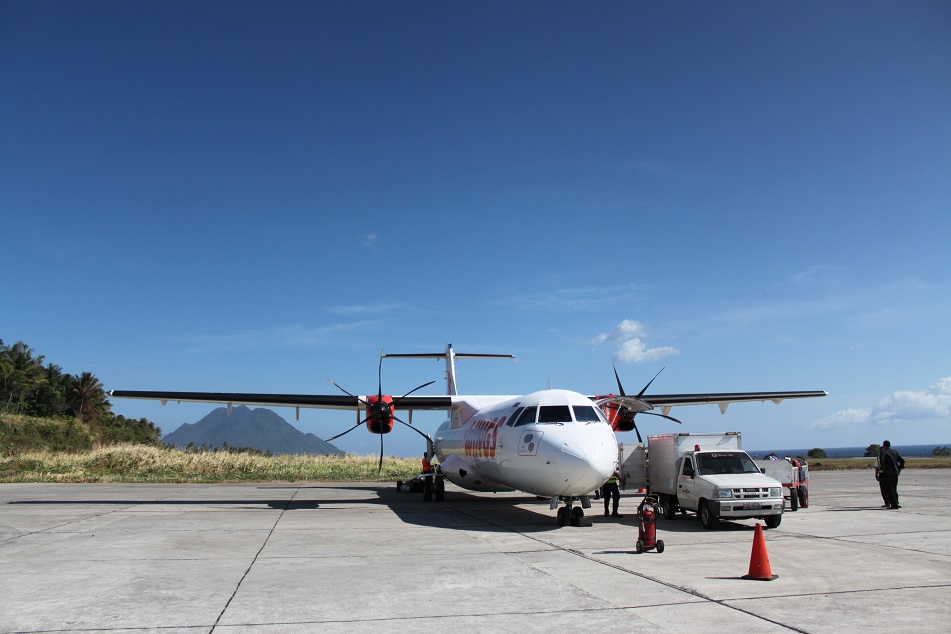

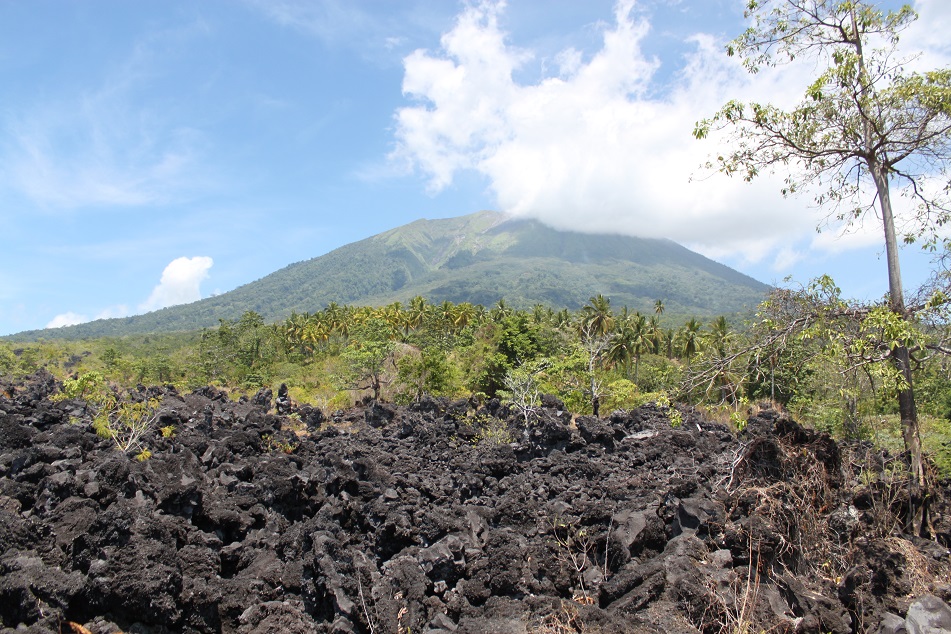



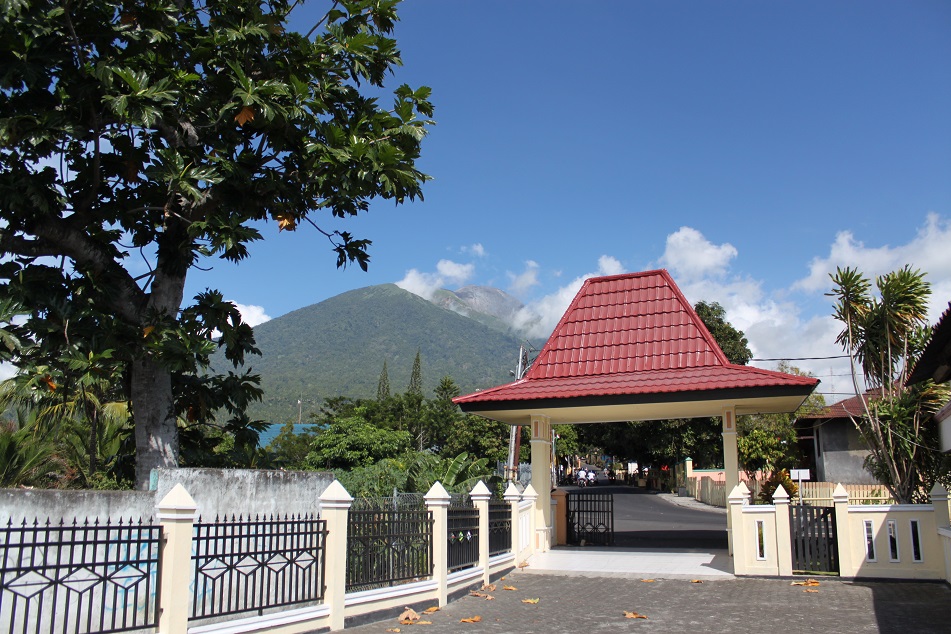



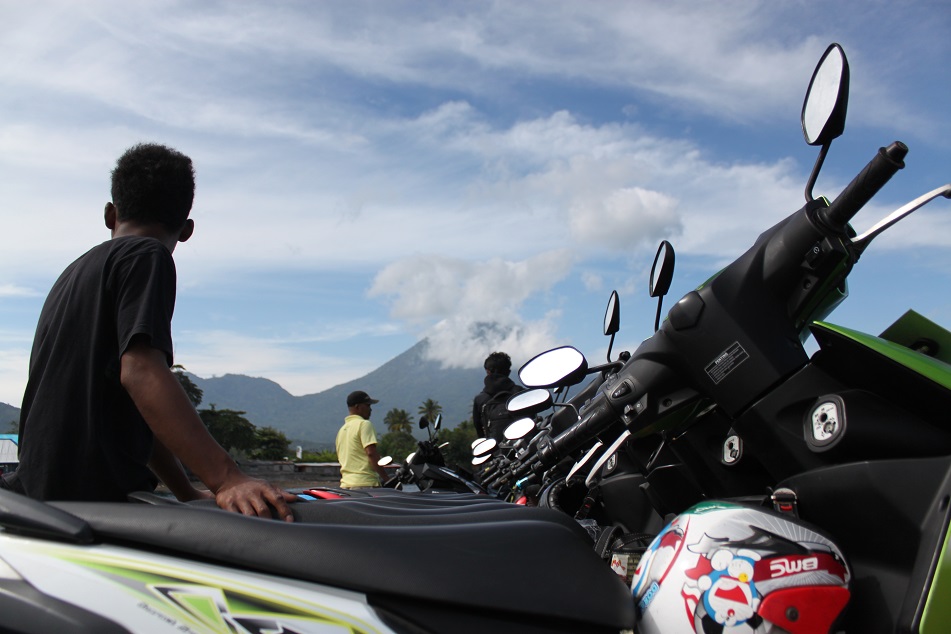
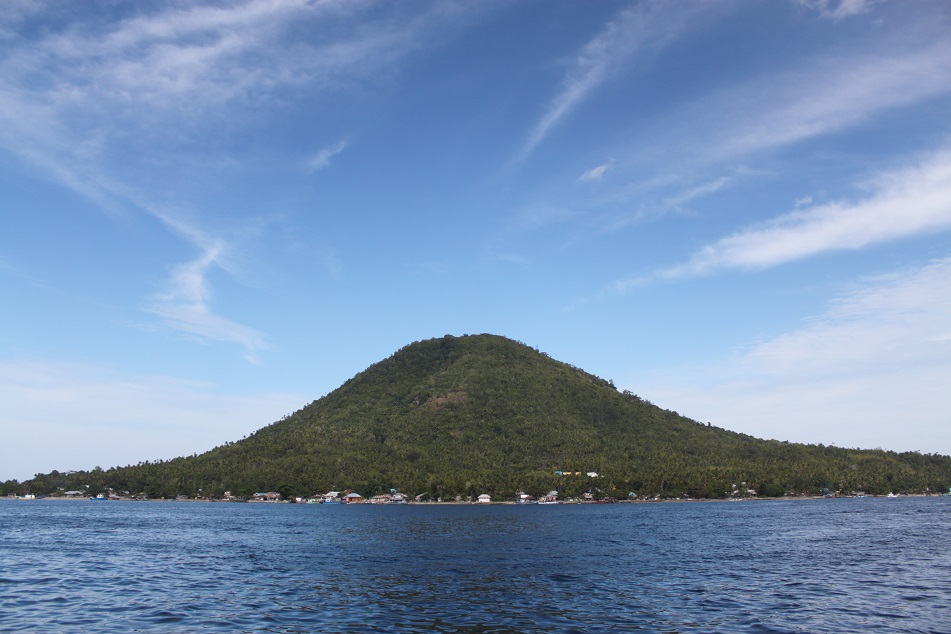
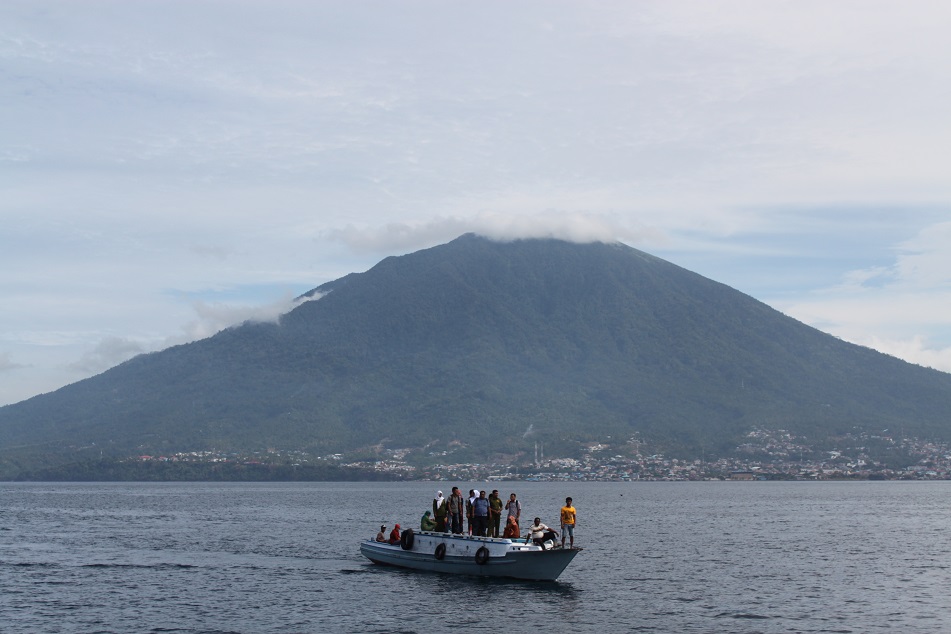




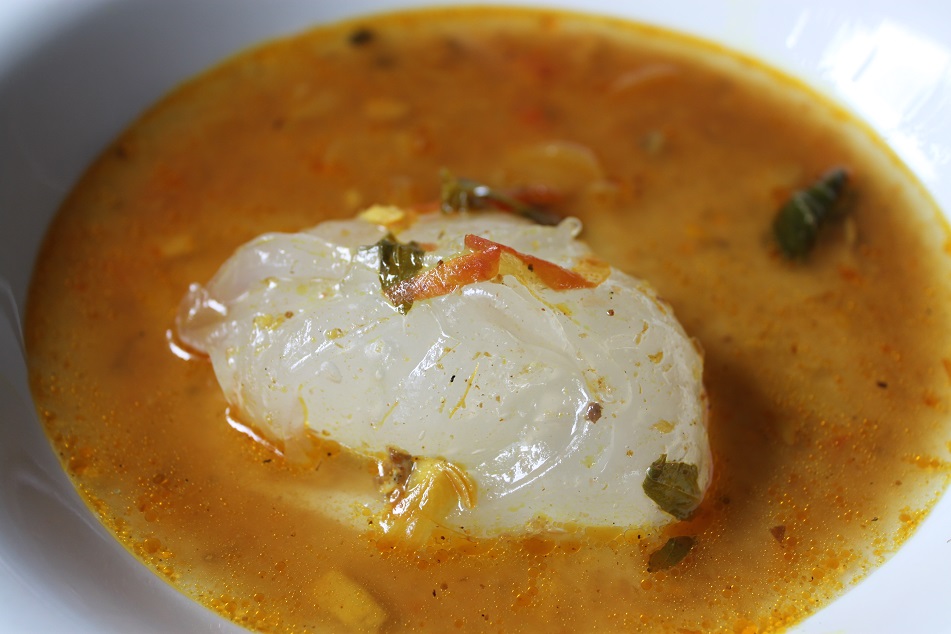

Wow, what an adventure! It must have been really scary to make such a rough landing. Great post with fabulous photographs. One hint: Keep the length a little shorter. I am having the same problem. I hope you don’t mind me saying so.
LikeLike
I tried to keep myself calm and composed during the flight, until we reached Manado. It really was such an adventure! Thanks for your kind words and suggestion, Peter. Writing a post with the ‘right’ length is always a challenge as I want to include some interesting historical facts. Too short, there will be too many things to miss. Too long, and people need more time to read. But again, thanks! I’ll try my best.
LikeLiked by 1 person
I will return to your post and finish reading the historical parts. Believe me I am also struggling with keeping the length of my posts under control. So my comment was based on my OWN shortcoming.
LikeLike
Thanks again for your suggestion, Peter. Really appreciate it!
LikeLiked by 1 person
I love the tone of this post — it’s so relaxed. I feel like you took me there with you. That gecko is awesome! Isn’t the Wallace Line fascinating? I learned about it when I was in Singapore and have read portions of “The Malay Archipelago” by Wallace himself. Amazing discoveries, although he wasn’t always kind to the locals — animal or human. Tough landing in Ternate! Sounds like my experience trying to land at Tioman Island. SIX times we went around because of crosswinds. I was terrified, but we finally landed. You can read my post if you search my blog for Tioman. Enjoy your weekend, Bama!! 🙂
LikeLike
Well thank you, Kelly! Ternate was in fact a very relaxing place in spite of its turbulent past. James and I rented a motorbike to go around the island, which would take about two hours if we didn’t stop. The way Wallace perceived the locals was ‘acceptable’ at that time, although it would have caused an uproar by modern standard. Nevertheless, I was so fascinated to read The Malay Archipelago when I was in Banda Neira, one of the islands in the Moluccas (more on that coming soon!).
Six times!!! That’s crazy! I’m surprised the plane actually had enough fuel to fly that long. I will look up your post, Kelly. Thanks and have a great weekend too! 🙂
LikeLike
First of all, congratulation that you landed safely and I admired your adventurous spirit 🙂 It sounds like a horrible flight. Secondly, informative post and awesome pictures as usual. I am really interested in the way they choose the Sultan, superstitious but a nice way to resolve the conflicts between princes. They don’t have to fight each other for the throne 🙂
LikeLike
Thanks Len. It’s a good thing that everyone abides by the crown’s ‘decision’, so the possibility of a conflict should be quite remote. However, the same method can’t be applied anywhere else, I suppose. 🙂
LikeLiked by 1 person
Sadly not… If the same rule could be applied to other places, there would be no wars and our earth would become a utopia 🙂
LikeLike
Well, that is to remind us all that peace, like health, doesn’t come cheap.
LikeLiked by 1 person
Cantik sekali danaunya.
Ternate memang cantik.
LikeLike
Memang betul. Ternate itu salah satu dari sekian banyak pulau cantik yang ada Indonesia Timur.
LikeLike
Fascinating insight. I guess the one whose head fits the crown means they can recycle the crown each generation. Great post.
LikeLike
The way the crown chooses a king might sound like something you would see in a movie. But traveling teaches us that the world is filled with fascinating stories and people. Thanks for reading, Mallee.
LikeLiked by 1 person
So interesting, Bama. I think I’d read briefly about the Wallace Line before, but it’s fascinating to revisit it, especially from the area in which it originated. The photo of the chunks of lava reminds me so much of similar fields of volcanic material in Nicaragua. This seems like such a unique destination in so many ways; I’m glad to read about here because it seems so far and difficult for me to ever reach!
LikeLike
Actually some photos of Nicaragua, especially the ones with volcanoes, remind me of some places in Indonesia — which is not too surprising since both countries lie within the Pacific Ring of Fire. I guess if you do want to go to Ternate, you need to fly to any major cities in Asia, then fly to Jakarta, and finally fly to Ternate. I’m glad this post piqued your interest in this far corner of the world, Lex.
LikeLiked by 1 person
Bama, let me just say that I have never had a problem with the length of your posts – for a history buff like me (and many other long-time followers), they have always been wonderful to read. I must also add that this is far more manageable than some of my earliest posts which had as many as 40 photos!
That first plane ride from Manado was the most nerve-wracking flight I’ve ever been on. At one point I honestly thought that it was really the end – we could have plummeted to the ground and crashed. That said, Ternate’s natural beauty was something I didn’t entirely expect; I could see why Wallace made it his base for several years. And I did appreciate your observant eye for spotting the wonderful critters hanging around our room.
LikeLike
Thanks James! I know that my travel blog is not for everyone — someone once said that it was too ‘serious’. But I always appreciate every comment, feedback, and thought I receive from people. It is nice to know how my blog is actually perceived by others.
Have you read Kelly’s post on Tioman? That sounds even crazier than our flight to Ternate! However, in hindsight our delayed arrival in Ternate meant a longer stay on the island since we decided to cancel Tobelo. Of all animals I spotted on Ternate, that skunk gecko was my favorite. It was a bigger and prettier version of a cicak. 🙂
LikeLiked by 1 person
Wonderful that you were able to explore an island without the usual tourist crowd. Would you say that the local food in Ternate closely resembled that of other Indonesian islands?
LikeLike
I was too pleasantly surprised by the lack of tourists visiting the island. The ones I saw seemed to be there because they were genuinely interested by Ternate’s history.
The dishes I tried in Ternate (and nearby Tidore) were typical eastern Indonesian food. If you go to different parts of Indonesia you’ll notice the vast differences among regions. In Aceh (northern part of Sumatra) the food is very rich and a bit oily. In the province to the south of Aceh many people eat pork. In southern Sumatra fish is the protein of choice. In West Java raw vegetables are eaten with different types of sambal (ground chili paste), while in Central Java people like to have their dishes sweet by adding kecap manis (sweet soy sauce) or palm sugar. In North Sulawesi chili is king, while in West Sumatra they use dozens (if not more) of spices in their cooking. I will elaborate further about Indonesian food in Chapter 5.
LikeLiked by 1 person
Ah! Looking forward to Chapter 5 then! And thanks for this mini-expose into the various delights of Indonesian cuisine.
LikeLike
My pleasure!
LikeLiked by 1 person
‘Love the post!
I’m a hstory buff so I like the details about the Spice Islands, and the great photography of course.
LikeLike
Hi Victoria. Thanks a lot! The Spice Islands is probably one of the most fascinating places on the planet due to its historical significance — it contributed to the creation of global colonialism and the theory of evolution.
LikeLiked by 1 person